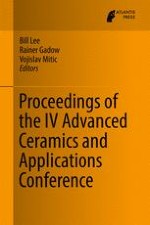2017 | OriginalPaper | Chapter
The Construction and Ceramics Industry Waste Gypsum Valorization Possibilities
Authors : Dragan Radulović, Anja Terzić, Ljubiša Andrić
Published in: Proceedings of the IV Advanced Ceramics and Applications Conference
Publisher: Atlantis Press
Activate our intelligent search to find suitable subject content or patents.
Select sections of text to find matching patents with Artificial Intelligence. powered by
Select sections of text to find additional relevant content using AI-assisted search. powered by
